Blocks shown in figure moves with constant velocity 10 m/s towards right. All surgaces in contact are rough. The friction force applied by B on A is :-
0 N
20 N
10 N
insufficient data
The correct Answer is:A
To solve the problem of finding the friction force applied by block B on block A, we can follow these steps:
1. Understand the Given Information:
- Blocks are moving with a constant velocity of 10 m/s towards the right.
- All surfaces in contact are rough.
- We need to find the friction force applied by block B on block A.
2. Identify Key Concepts:
- Since the blocks are moving with a constant velocity, this implies that there is no acceleration. According to Newton's first law, if the velocity is constant, the net force acting on the blocks is zero.
3. Apply Newton's Second Law:
- According to Newton's second law, F=ma, where F is the net force, m is the mass, and a is the acceleration.
- In this case, since the blocks are moving at a constant velocity, the acceleration a=0.
4. Calculate the Net Force:
- Since a=0, we can write:
F=m⋅0=0
- This means the net force acting on block A is zero.
5. Analyze the Forces:
- The only horizontal forces acting on block A are the friction force exerted by block B and any other external forces (if any). However, since the blocks are moving with constant velocity, the friction force must balance any other forces acting on block A.
6. Conclusion:
- Since the net force is zero and there is no acceleration, the friction force applied by block B on block A must also be zero. Therefore, the friction force Ffriction=0N.
Final Answer:
The friction force applied by B on A is 0 N.
- Blocks are moving with a constant velocity of 10 m/s towards the right.
- All surfaces in contact are rough.
- We need to find the friction force applied by block B on block A.
- Since the blocks are moving with a constant velocity, this implies that there is no acceleration. According to Newton's first law, if the velocity is constant, the net force acting on the blocks is zero.
- According to Newton's second law, F=ma, where F is the net force, m is the mass, and a is the acceleration.
- In this case, since the blocks are moving at a constant velocity, the acceleration a=0.
- Since a=0, we can write:
F=m⋅0=0
- This means the net force acting on block A is zero.
- The only horizontal forces acting on block A are the friction force exerted by block B and any other external forces (if any). However, since the blocks are moving with constant velocity, the friction force must balance any other forces acting on block A.
- Since the net force is zero and there is no acceleration, the friction force applied by block B on block A must also be zero. Therefore, the friction force Ffriction=0N.
The friction force applied by B on A is 0 N.
Topper's Solved these Questions
- RACEBOOK - ALLENCHAPTER - RACEEXERCISE - Basic Maths (WORK POWER & ENERGY)
34 Videos
- RACEBOOK - ALLENCHAPTER - RACEEXERCISE - Basic Maths (CIRCULAR MOTION)
17 Videos
- RACEBOOK - ALLENCHAPTER - RACEEXERCISE - Basic Maths (NEWTONS LAWS OF MOTION)
46 Videos
- NEWTONS LAWS OF MOTIONBOOK - ALLENCHAPTER - NEWTONS LAWS OF MOTIONEXERCISE - EXERCISE-III
28 Videos
- SIMPLE HARMONIC MOTIONBOOK - ALLENCHAPTER - SIMPLE HARMONIC MOTIONEXERCISE - Example
1 Videos
Similar Questions
Blocks shown in figure moves with constant velocity 20 m/s towards right. All surfaces in contact are rough. The friction force applied by B on A is
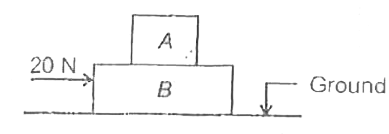
View SolutionBoth the blocks as shown in figure are given together a horizontal velocity towards right. The acceleration of the centre of mass of the system of block is (mA=2mB=2kg).
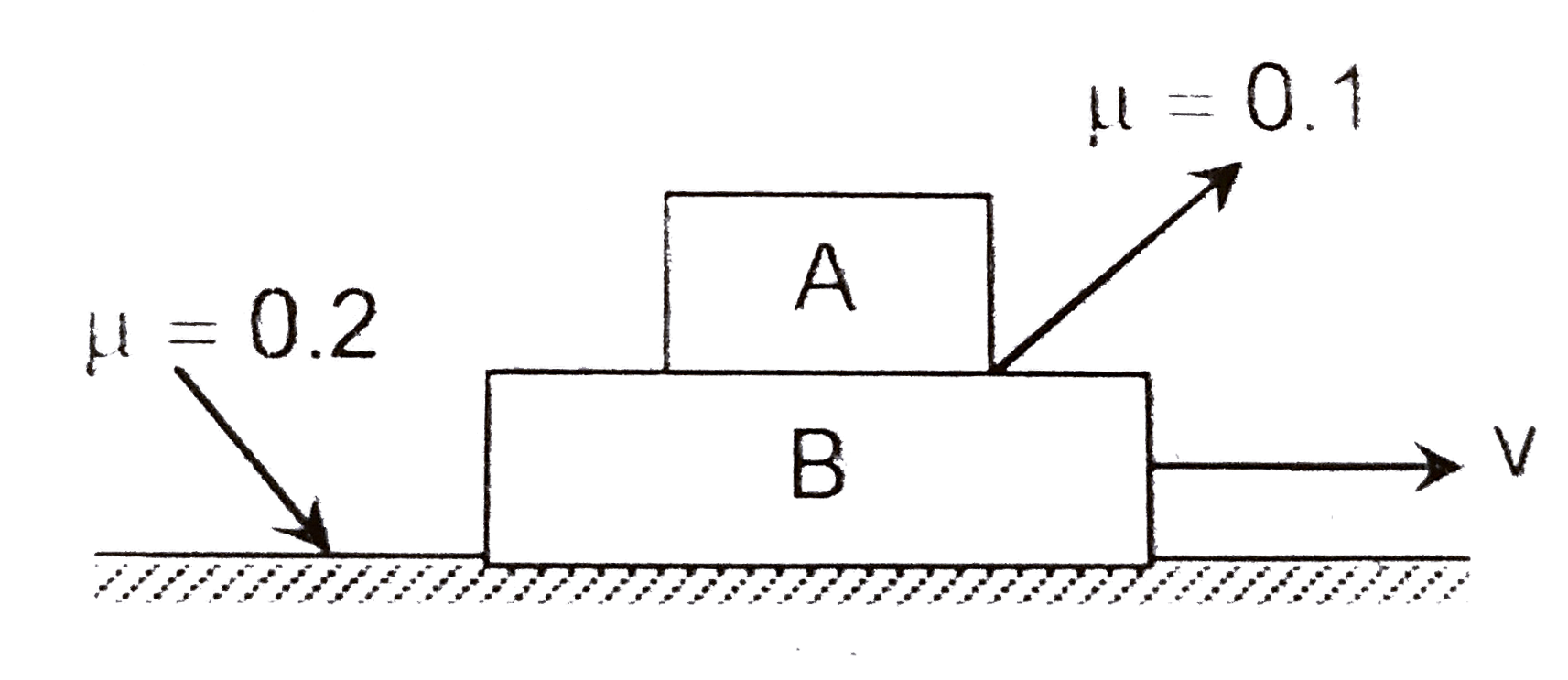
(A)zero (B)5/3m/s2 (C)7/3m/s2 (D)2m/s2
View SolutionA block system is shown in figure.Frictional force on
View SolutionA block of mass 10 kg is moving on a rough surface as shown in figure. The frictional force acting on block is :-
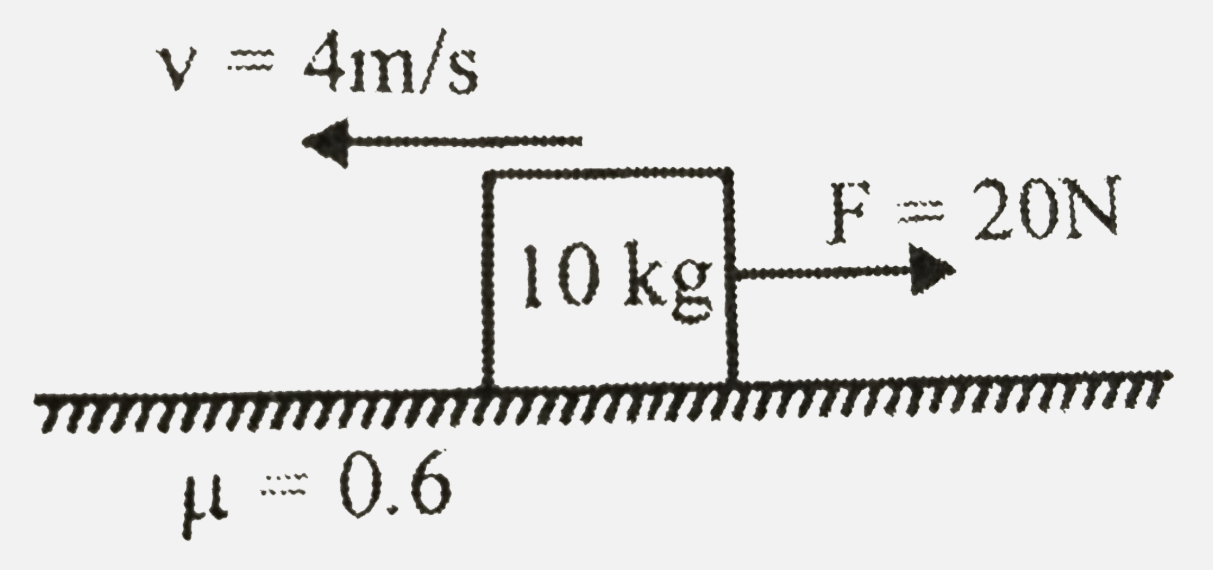
View SolutionBlock of mass 10 kg is moving on inclined plane with constant velocity 10 m/s. The coedfficient of kinetic friction between incline plane and block is :-
View SolutionConsider the situation shown in figure. The wall is smooth but the surfces of A and B in contact are rough. The friction on B due to A in equilibrium.
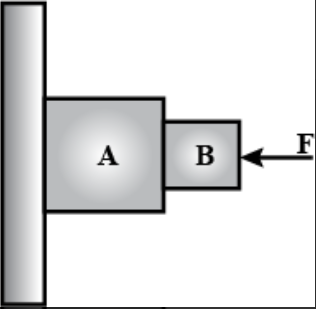
View SolutionA particle of mass 5kg is moving on rough fixed inclined plane with constant velocity of 5m/s as shown in the figure. Find the friction force acting on a body by plane.

View SolutionA system is shown in the figure. Block A moves with velocity 10m/s. The speed of the mass B will be :
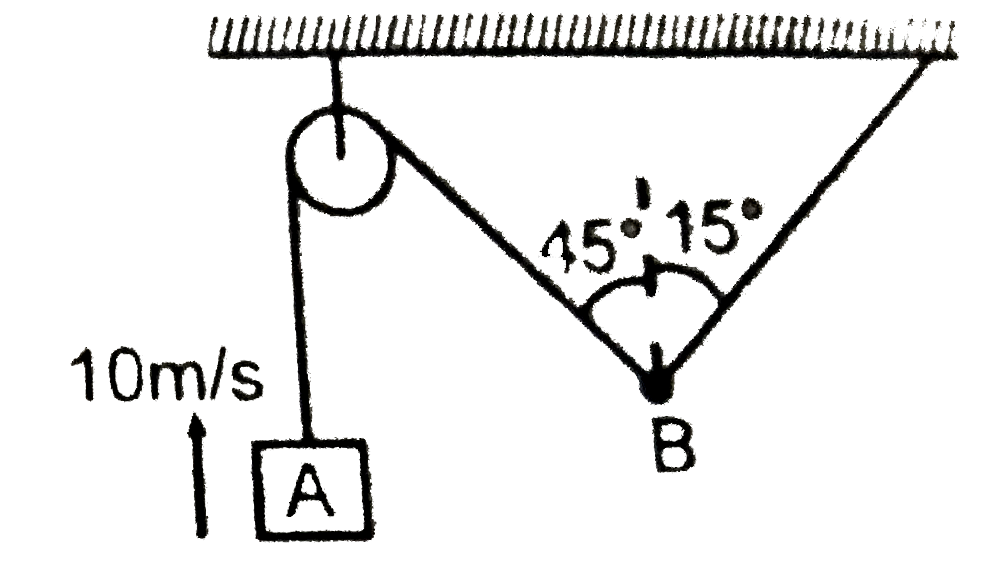
View SolutionA block of mass m slides along a frictionless surfce as shown in the figure. If it is releases from rest from A what is its speed at B?
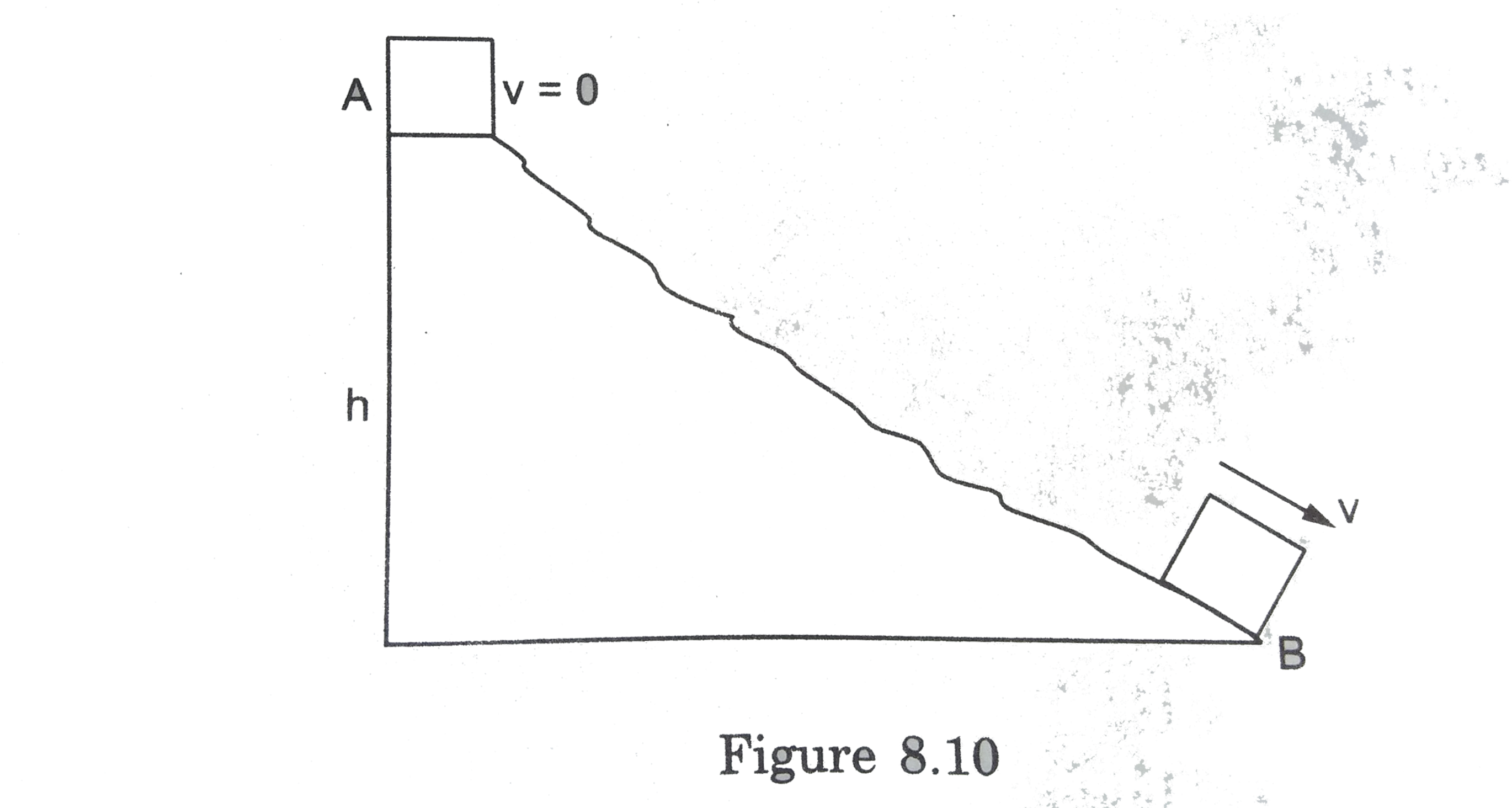
View SolutionA block of mass 10kg is moving on a rough horizontal surface as shown in figure. At t=0, velocity of block is 10ms towards left and a constant force F=10N acts horizontally towards right. Acceleration of the block at t=3s is (g=10ms−2)
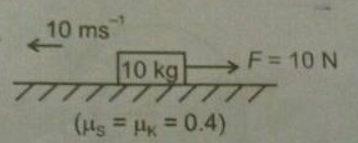
View Solution
